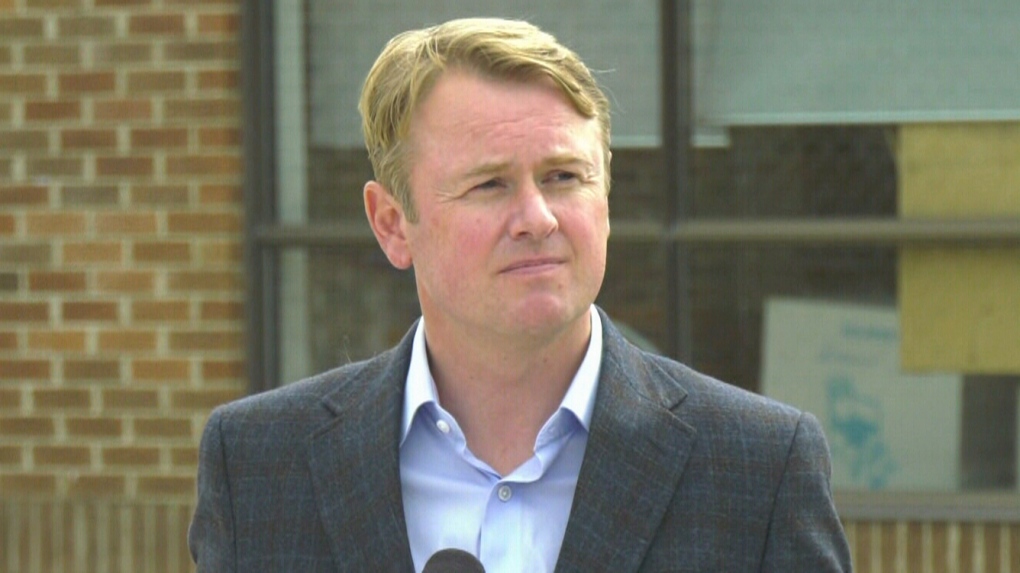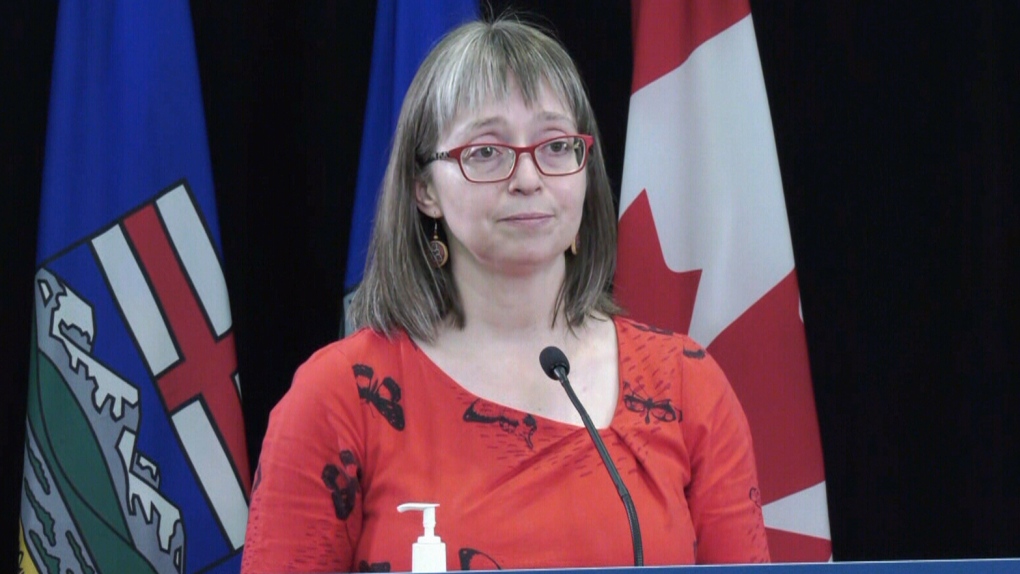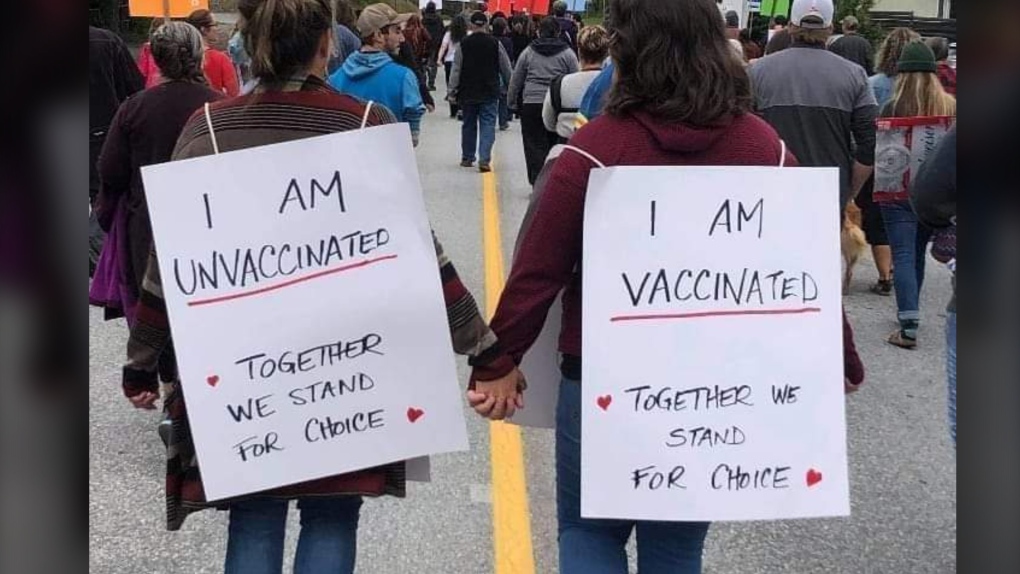
Fri., September 10, 2021
OTTAWA — Federal party leaders were defending Quebec against charges of racism on Friday — a day too late, Bloc Québécois Leader Yves-François Blanchet shot back — as they returned to the road hoping to capitalize on any post-debate momentum as Canadians start voting in advance polls.
No stranger to recent federal election campaigns, the controversial issue of secularism in Quebec once again burst onto the scene at Thursday's English-language debate, when Blanchet objected strongly to the phrasing of a question by moderator Shachi Kurl.
Kurl asked about Blanchet's support for "discriminatory" laws in Quebec such as one known as Bill 21, which bars some civil servants in positions of authority from wearing religious symbols or garb. Blanchet in turn accused her of painting all Quebecers as racist.
Liberal Leader Justin Trudeau and Conservative rival Erin O’Toole in separate campaign events on Friday asserted Quebecers are not racist, while NDP Leader Jagmeet Singh said it was unhelpful for the fight against systemic racism to single out any one province or territory.
Quebec, with 78 seats, is a key battleground that could determine the outcome of the election. At dissolution, the Liberals held 35 seats in the provinces, the Bloc 32, the Conservatives 10 and the NDP just one.
Quebec Premier Francois Legault for his part described the question about Bill 21 and Bill 96, which proposes to strengthen the role of French in Quebec, as “unacceptable” and an attack on the province. He called for Kurl and debate organizers to apologize.
Both Bills 21 and 96 have been panned by civil liberties and human rights groups as discriminatory. Bill 21, which has widespread support in the province, has been challenged in court, though the province has pre-emptively used the notwithstanding clause to protect it from a challenge under the Charter of Rights and Freedoms.
Blanchet defended both laws during the debate as legitimate and reflective of Quebec’s values.
He also objected to how the issue of systemic discrimination had become "a political tool" to use against Quebec. "It became a tool to say Quebec is this and that and racist and xenophobic and all of that,” Blanchet said in the debate.
The only leader to challenge Blanchet during the debate was Green Party Leader Annamie Paul, who invited the Bloc Québécois leader “to get educated about systemic discrimination.”
Trudeau has previously spoken out against Bill 21, including during the 2019 federal election, as well as a ban on face coverings adopted by the Quebec government. That issue also figured prominently in the 2015 election when the former Conservative government mulled a niqab ban for public servants. He reiterated his opposition to the secularism law on Friday.
Yet the Liberal leader also said he was “taken aback” by the premise of Kurl’s question, saying during a campaign event in Hamilton, Ont.: “It is wrong to suggest that Quebecers are racist. As a Quebecer, I found that question really offensive.
“Yes, there's lots of work to do to continue to fight systemic racism across this country and every part of this country. But I don't think that that question was acceptable or appropriate.”
Trudeau made the comments as the Liberals announced they were launching a new advertising campaign in Quebec.
O’Toole went further, promising that as prime minister, he would never challenge a law passed by a provincial legislature.
“Quebecers are not racist, and it's unfair to make that sweeping categorization,” the Conservative leader said during an event in Mississauga, Ont. “They've made decisions and laws passed by their national assembly. I will respect that.”
Singh during a news conference in Ottawa said systemic racism and discrimination are not isolated to one province or territory, suggest one of the biggest examples is Ottawa’s failure to address boil-water advisories on First Nations.
“This is not a problem of any one province or territory,” he said before flying to British Columbia to vote in an advance poll in his riding. “It exists everywhere in Canada. And to tackle it, we've got to acknowledge that it's everywhere and work together towards eradicating it.”
Blanchet, who also voted in an advance poll on Friday, accused the other three leaders of coming too late to Quebec’s defence.
“I will let Quebecers measure the credibility of these renewed affections, which did not appear when the time was right," he said in French.
He also defended the law, saying in English: "Religion has never protected equality for women within the state and never will. We are not the ones working with discrimination in mind."
Others were equally critical of Trudeau, O’Toole and Singh, but for different reasons: Not standing up to Blanchet and clearly denouncing Bill 21.
“When the other party leaders did not step in to argue that Bill 21 does engage in act of systemic discrimination, that's shameful," said Mustafa Farooq, chief executive officer of the National Council of Canadian Muslims, which is challenging the law in the Court of Appeal of Quebec.
Canadians United Against Hate founder Fareed Khan accused Blanchet of getting “all huffy” during the debate, adding: “I would say to Mr. Blanchet, if he was in front of me: ‘If you don't want to be labelled as xenophobe and a racist then don't support xenophobic, racist legislation.’”
Singh, meanwhile, revealed the NDP will release the full costs of its campaign promises on Saturday, as he faced several questions about why Canadians have yet to see the fine print on its platform with the final vote just 10 days away.
Both the Conservatives and Liberals have released fully costed platforms.
“We've been working with the PBO, and it certainly does take time,” the NDP leader said in reference to the parliamentary budget officer.
“The PBO is obviously very respected and they've got a great track record of being able to cost our platform. So we wanted to work with them, and we'll have our costed platform released on Saturday.”
On Friday, Statistics Canada reported the economy added 90,000 jobs in August — the third consecutive monthly increase.
The unemployment rate fell to 7.1 per cent for the month, compared with 7.5 per cent in July, bringing the rate to the lowest level since the onset of the pandemic last year.
Gains were concentrated in full-time work and in the hard-hit service sector, led by gains in accommodation and food services as restrictions eased in much of the country.
This report by The Canadian Press was first published Sept. 10, 2021.
— with files from Lee Berthiaume and Maan Alhmidi in Ottawa, Jacob Serebrin in Montreal and Allison Jones in Toronto.
The Canadian Press
Maurice Duplessis - Wikipedia
Duplessis was born in Trois-Rivières, the son of Bertha (born Genest) and local politician Nérée Le Noblet Duplessis. He studied at the Séminaire Saint-Joseph de Trois-Rivières, obtained a law degree from Université Laval's Montreal branch (later renamed Université de Montréal) and was admitted to the Barreau du Quebec in 1913. He returned to his home town to practice law until runnin…
Maurice Duplessis | The Canadian Encyclopedia
- Maurice Duplessis's father, Nérée Le Noblet Duplessis, was a fervently Catholic and Conservative MLA for Trois-Rivières 1886–1900. He had been an unsuccessful federal Conservative Party candidate before being named a superior court judge by Sir Robert Borden in 1915. Duplessis' mother was of part Scottish and Irishdescent. After studying at Collège Notre-Dame in Montreal (where he became something of a protégé of Brother André) and the Séminaire de Trois-Rivières, he graduated from Université Laval's Mo…
In both the federal and municipal campaigns, minority communities are left high and dry.
Author of the article:Robert Libman • Special to Montreal Gazette
Publishing date:Sep 10, 2021 •

Intimidation. Bullying. Ridicule. Some of the words that come to mind in describing how Quebec politicians and opinion leaders quickly attack anyone who dares to disagree with supposed Quebec collective opinion. This week, both the federal and municipal election campaigns clearly highlighted how parties will cower if they anger the Quebec nationalist bear and then quickly fall into line to curry favour. As usual, Quebec minorities are left high and dry
In a free and democratic society, people — including minorities — should be treated in a manner that is fair and equitable. This week, Bloc Québécois Leader Yves-François Blanchet, Premier François Legault and even Montreal mayoralty candidate Denis Coderre attacked the English Montreal School Board, with Legault calling it a “radical” organization.
So, what was the EMSB’s odious sin that merited the wrath of representatives from all three levels of government? The board is daring to challenge Bill 96 — the Legault government’s proposed revision of the French Language Charter — whose changes include the constitutional recognition of Quebec as a “nation,” with French as the only official and common language. The EMSB is calling on the federal government to refer the legislation to the Supreme Court to test its legality.
The symbolism of Quebec as a nation has been recognized before in the House of Commons. Nation is defined as “a large body of people united by common descent, history, culture or language inhabiting a particular country or territory,” according to Oxford Languages. No one can really deny that Quebec is uniquely different from the rest of Canada with its majority language and culture, and many believe the acknowledgement is important. To many Quebec anglophones, however, because of the restrictive aspects of Quebec’s language laws, the concept reinforces the notion they are being relegated to second-class citizenry and creates confusion over whether it implies that Quebec is a country within a country.
However, this current debate is not about mere symbolic recognition of Quebec’s uniqueness. Bill 96 seeks to inscribe this concept of a Quebec nation — a concept of collective rights — in the Constitution, which could be severely detrimental to the legal protection of minority rights in Quebec.
In the future, when issues are brought before the courts — for example, on minority language rights, educational rights or secularism — would judges be compelled to weigh individual Charter of Rights protections in the Constitution against the collective rights of the Quebec nation? In which direction would they tip the balance? Could this impact the anglophone community’s rights regarding control of our education system as contained in Section 23 of the Constitution? The notwithstanding clause cannot even apply to that section. Would Section 23 now become vulnerable? These are grey areas for interpretation and fundamental questions affecting English-language school boards. That’s why referring the matter to the Supreme Court is critical.
Everyone seems to panic when nationalist pressure is brought to bear. In the federal election campaign, we’ve seen how all the parties are willing to sell out minority communities in exchange for the craved-for blessing of the Quebec nationalist elite. At the municipal level, Coderre showed weakness and insulted the anglophone community by revoking EMSB chairman Joe Ortona’s candidacy for his party.
Even Ortona and the EMSB recoiled in the face of nationalist blowback. Commissioners will be voting this weekend to change their position on Quebec nationhood. For years, this school board has been an embarrassment because of infighting under its former chairman. But they are supposed to stand up for the community whose interests they represent. It’s not the time for them to back down on such a fundamental issue.
If one doesn’t stand up to intimidation, bullying and ridicule, nothing will change.
Robert Libman is an architect and building planning consultant who has served as Equality Party leader and MNA, as mayor of Côte-St-Luc and as a member of the Montreal executive committee. He was a Conservative candidate in the 2015 federal election.

















